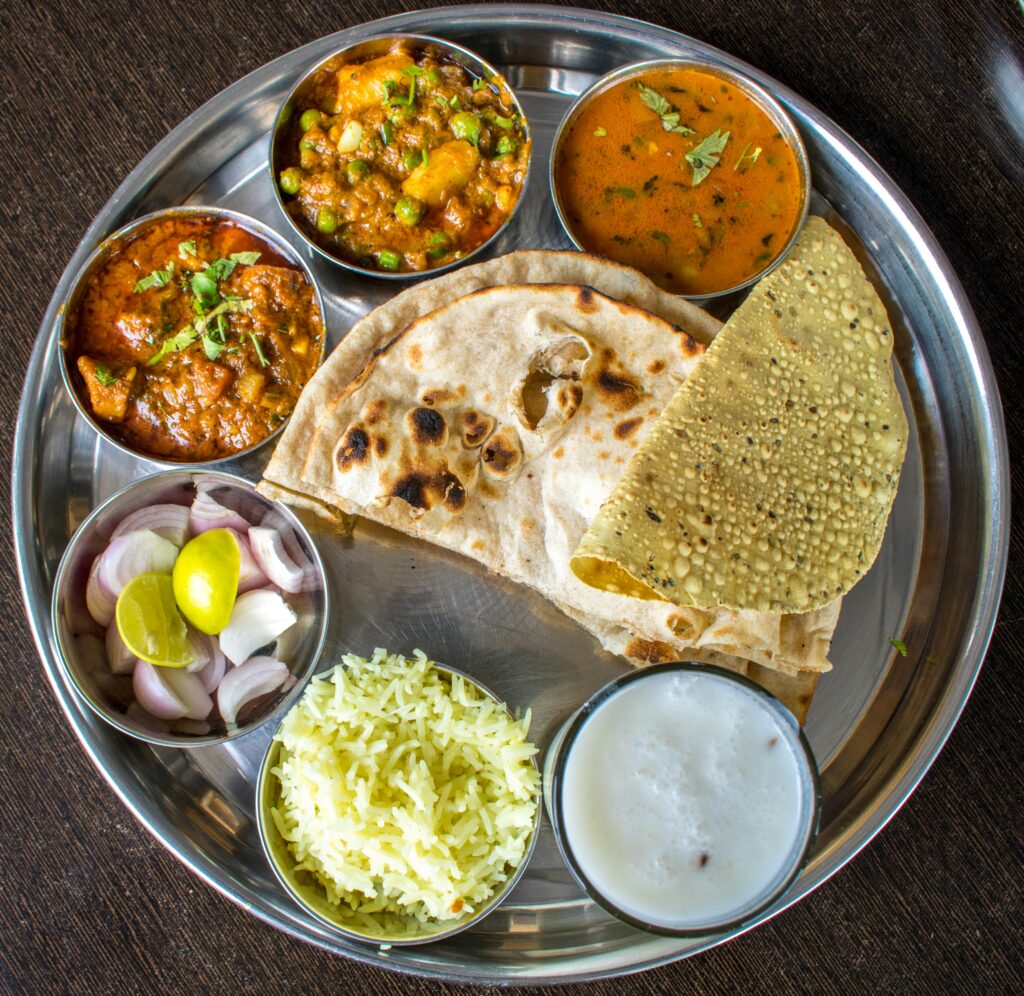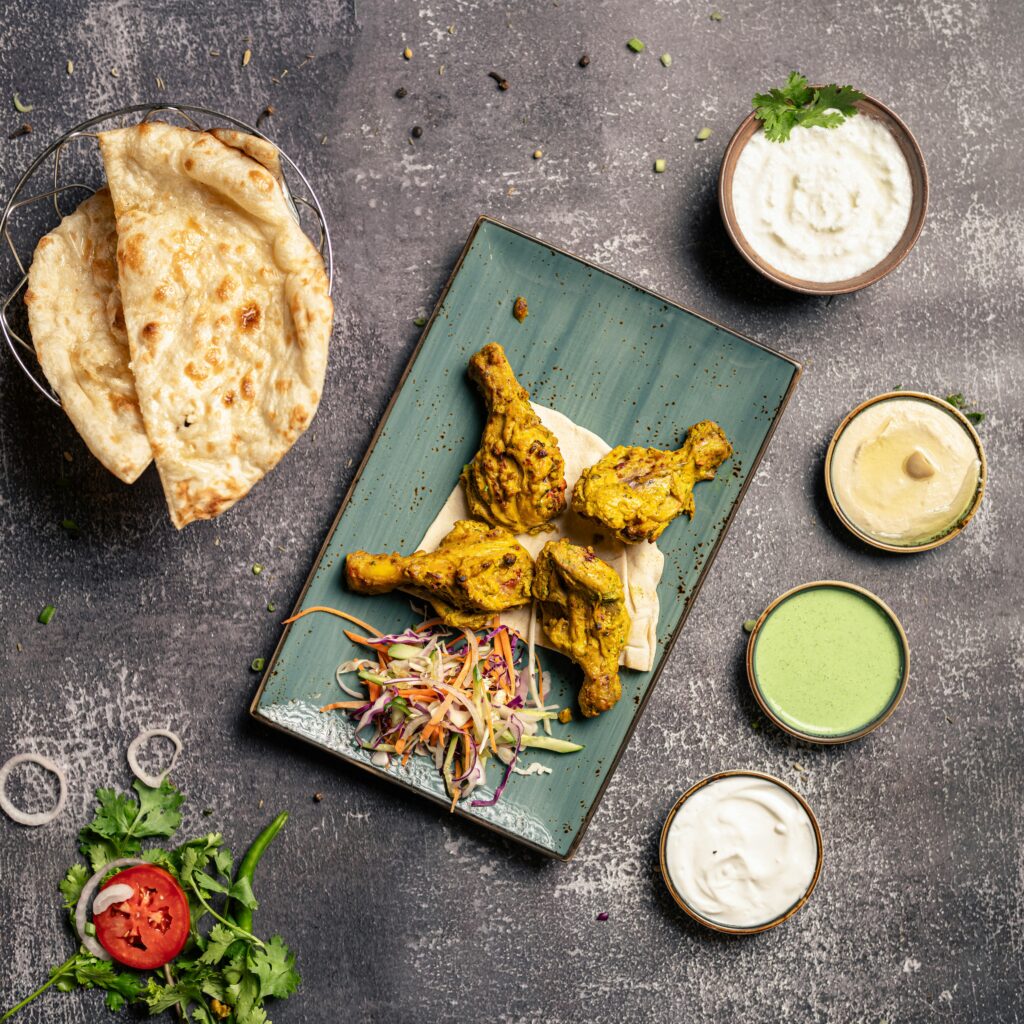


Introduction
India is home to many different customs, cultures, and culinary traditions. South and North Indian India’s cuisine can be broadly classified as either North Indian or South Indian.best south indian breakfast in bangalore
Each has distinctive cooking methods, flavors, and specialties. While bread-based meals and rich, creamy gravies are hallmarks of North Indian cuisine, South Indian cuisine is characterized by its rice-based dishes and tangy, spicy spices. will be introduced, along with distinctions as well as parallels between these two culinary traditions, for foodies who want to experience India’s unique cuisines.
Key Differences Between South and North Indian Cuisine
1. Ingredients Used
- North Indian Cuisine: Uses dairy products like ghee, butter, yogurt, and cream. Wheat-based items like roti, naan, and paratha are staples.
- South Indian Cuisine: Primarily uses rice, coconut, tamarind, curry leaves, and mustard seeds. Lentils and fermented batters are also common.
2. Staple Food
- North Indian: Roti, Naan, Paratha, Biryani, and Pulao.
- South Indian: Rice, Idli, Dosa, Upma, and Sambar.
3. Cooking Techniques
- North Indian: Tandoor cooking, slow cooking with spices, and frying.
- South Indian: Fermentation, steaming, and tempering with mustard seeds and curry leaves.
4. Flavor Profiles
- North Indian: Rich, creamy, mildly spicy, and aromatic.
- South Indian: Tangy, spicy, coconut-infused, and more watery or stew-like dishes.
Popular South Indian Dishes
1. Dosa
A thin, crispy pancake made from fermented rice and lentil batter, often served with chutneys and sambar.
2. Idli
Steamed rice cakes that are light, fluffy, and perfect for a healthy breakfast.
3. Sambar
A lentil-based vegetable stew with tamarind and spices, commonly served with rice and tiffin items.
4. Rasam
A tangy soup made with tamarind juice, tomatoes, and spices, often consumed before meals.
5. Curd Rice
A simple, refreshing dish made with yogurt and rice, seasoned with mustard seeds and curry leaves.
Popular North Indian Dishes
1. Butter Chicken
A creamy tomato-based curry with tender chicken pieces usually enjoyed with naan or rice.
2. Paneer Tikka
Cubes of paneer marinated in yogurt and spices grilled to perfection.
3. Rogan Josh
A flavorful mutton curry from Kashmir, cooked with aromatic spices.
4. Dal Makhani
A rich and creamy lentil dish slow-cooked with butter and cream.
5. Chole Bhature
A combination of spicy chickpea curry and deep-fried bread, popular in North India.
Best South Indian Restaurants
- Saravana Bhavan – A globally recognized chain serving authentic vegetarian.
- MTR (Mavalli Tiffin Room) – Famous for its crispy dosas and delicious filter coffee.
- Annalakshmi – A traditional eatery offering home-style South Indian meals.
Best North Indian Restaurants
- Bukhara – Known for its tandoori dishes and rustic flavors. South and North Indian
- Punjab Grill – Serves authentic North Indian delicacies with a modern twist. South and North Indian
- Karim’s – A legendary eatery famous for its Mughlai cuisine. South and North Indian
Why You Should Try Both Cuisines
Although the flavors and cooking methods of cuisine differ, both provide a delectable culinary experience. South Indian food is tasty and light, whereas North Indian food is rich and decadent. You will gain a comprehensive understanding of India’s culinary diversity by exploring both cuisines.
Conclusion
South and North Indian cuisine finest exemplify the diversity of India’s culinary culture, which is a stunning fusion of many traditions. All tastes can be satisfied, whether they prefer the creamy textures of North Indian cuisine or the zesty flavors of South Indian cuisine. Try both types and savor India’s amazing flavors the next time you’re at an Indian restaurant!
